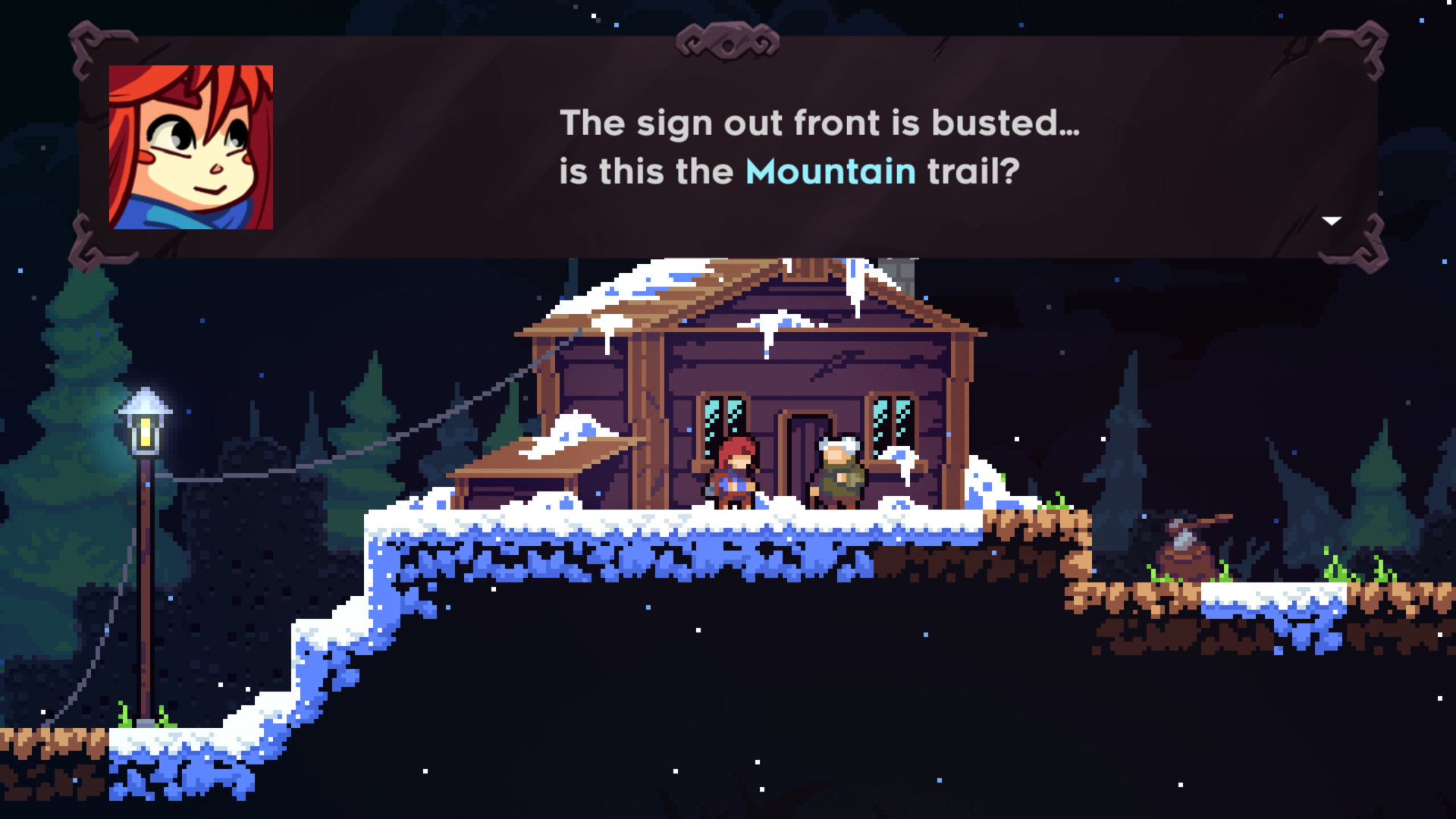A few days ago I started playing Celeste, the tight platformer about climbing a mountain and meeting cool people in the process. Today we’ll talk about how Celeste achieves having so much personality and how it really changed me, on a personal level.
I usually don’t talk about video games (because I don’t play a lot of them) but I want to make an exception today.
⚠️ This post contains spoilers
Go play the game if you haven’t, it really is a great experience.

Chapter 1: Madeline is a genius protagonist
In this game we control Madeline, a girl climbing Mountain Celeste. While the focus of the game is platforming and “climbing a mountain”, it’s clear from the start that the mountain is just a metaphor for something deeper. We encounter monuments dedicated to perished climbers, who couldn’t make it, Madeline questions herself a lot during this climbing, but something inside her screams that this is the correct route. Really Climbing the mountain is the only way to be happy.
This probably isn’t a surprise for anyone, but Madeline is trans, the mountain represents her travel through figuring it out (which isn’t easy)
This makes a great portion of players feel very identified with her. Not because a great portion of player are trans, but because almost everyone has their own journey, their own mountain.
The art-style
Celeste’s art-style is often overlooked imo. The platforming part of it is pixel-art with a lot of colors. Note that the terrain is clearly tile-based, which gives the game these very classic feeling (I’m not usually a fan of “vintage” or “old-feeling” styles, but this time it’s really well pulled-off). None of this applies to the dialogs. Both the dialogs font and character’s pictures are in a high resolution, very “characterized” art-style. The font is bold, it moves to reflect shakiness, changes color to reflect the character’s emotions or tone (or certain keywords). It has a lot of personality that, when mixed with the picture along the text really gives the pixels on screen a whole new level of expressiveness.

Each character has its own personality and mannerisms. It isn’t boring talking to them, each time Madeline talks to someone, it doesn’t last longer than two or three minutes. It isn’t boring, like in a lot of other games where the creators feel the need to insert a lot of lore into their 2 hours game.
Chapter 2: Celeste is still centered around gameplay
Celeste pulls elements of a lot of games. It gets the quick gameplay loop (die fast, spawn faster), and having a small and dynamic character from SUPER MEAT BOY (what a cool font) but I feel like its tile-based levels are more of a SUPER MARIO MAKER vibe. But it also adds its own spirit in the way of the movement by adding a crucial element used in almost all screens. The dash.
We can dash using X on keyboard (I know, nobody plays Celeste with except me), this dash moves us a bit forward and can be modified by using the arrow keys. This is an awesome mobility tool that really makes the game dynamic. If we mix this dash with the awesome ability to climb walls directly, Madeline has an awesome arsenal of tools to travel through each level.
Fruits and cassettes and timers and…
A big element of Celeste is its competitive aspect. You can collect strawberries and cassettes as collectables, as well as unlocking secrets like the PICO-8 mode. All these little things give the game a very cool sense of progression. Celeste is made for speedrunning, this is clear from the very start; You can have an in-game timer (which is required for speedrun.com runs), you have several modes of progression (red berries, cassettes, All hearts, All B-sides, 100%, …), you can even race your friends about number of deaths (don’t worry much about them, a normal player will have a couple of thousands by the end of the game)
All these elements gives the speedrunning community such a fun time, that, when mixed with gameplay mechanics and the overall difficulty of the game, makes a very fun and challenging game to speedrun.
Chapter 3: Conclusion
Celeste is a frictionless game, someone invested in it (either for the magnificent story or for the fun gameplay) could play it for hours. The dynamic stages, the short bursts of chained jumps, the overall graphics that don’t get tired. It’s crafted to be a masterpiece of a game, that doesn’t fail to deliver.
I’m not a game critic, nor a game designer, just a passionate fan about this one game I bought yesterday :D